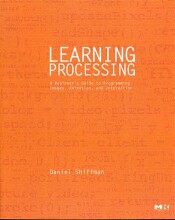Summary: Programming
- This + 400k other summaries
- A unique study and practice tool
- Never study anything twice again
- Get the grades you hope for
- 100% sure, 100% understanding
Read the summary and the most important questions on Programming
-
1 Programming
This is a preview. There are 14 more flashcards available for chapter 1
Show more cards here -
What is a mnemoinc system?
Representing numeric form in mnemonic form. -
What are the generations languages?
First generation: machine language
Second generation: assembly language -
What is bad about assembly languages?
- Machine dependent: instructions are expressed in terms of a particular machine's attributes.
- Programmer still has to think in small incremental steps.
-
What was the third generation of programming languages?
They expressed instructions in larger increments and were machine independent. Known examples: FORTRAN and COBOL. -
Difference between compilers and assemblers?
Assemblers: 2nd gen
Compilers: 3rd gen, work more directly; compile several machine instructions into short sequences (translator) -
Difference between interpreters and translators?
Executed instructions as they were translated instead of recording the translated version for future use. -
What is the imperative paradigm?
Development of sequence of commands, when followed, manipulate data to produce the desired result: C -
What is the functional paradigm?
A program is constructed by connecting smaller predefined program functions: R -
What is the object-oriented paradigm?
Objects interact with each other by means of methods: Java -
What are the three category of statements?
- Declarative statements: define customized terminology that is used later in the program (names used to reference data items
- Imperative statements: describe steps in the underlying algorithms
- Comments: enhance readability of a program by explaining its esoteric features in a more human-compatible form.
- Higher grades + faster learning
- Never study anything twice
- 100% sure, 100% understanding































